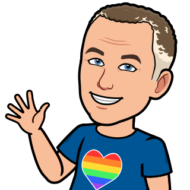The Chancellor’s Office of the California Community College (CCC) office recently held a webinar with an update to their plan for Diversity, Equity and Inclusion (DEI) Integration in the coming years for the CCC system. It left some of us scratching our heads in confusion and flat out dissatisfaction. What, if not focus on diversity, equity and inclusion, does the plan intend if it fails to include all marginalized groups?
The webinar was held on December 2, 2020, via Zoom, and was advertised to, “showcase the commitment and progress of system stakeholder groups toward the Diversity, Equity, and Inclusion Integration Plan” of the CCC.
Dr. Daisy Gonzales, the Deputy Chancellor of Diversity, Equity and Inclusion, opened the webinar. Not ten minutes into it, though, it appeared to leave out all but one of the marginalized communities in the DEI plan for California Community Colleges. Despite the job title, Dr. Gonzales focused singularly on racial diversity and equity, while excluding everyone else who deserves to be included. At least according to the legal definition of diversity found in 5 CCR Section 53001.
As college educators, I believe we all want to be part of the progression toward a fair and equitable environment in higher ed. The Q&A chat during the webinar was flooded with questions from people about how they can get more involved. The enthusiasm from participants was palpable.
And then came a few uncomfortable questions from viewers.
“Will there be a DEI Plan for other marginalized groups? Those with disabilities face unintentional and intentional biases and discrimination in the classrooms. Where is that in the DEI plan?”
Dr. Evan Wirig, Grossmont College
Gonzales quickly dismissed the question, answering, “This work begins with race/ethnicity and will build on the intersectionality of our lives.”
Dr. Wirig was clearly unmoved.
“Thanks, Daisy. I am a member of several State and National Orgs concerning those with disabilities. If we focus only on certain groups and exclude others we are definitely not inclusive, nor are we diverse or equitable.”
A question (from yours truly) about the inclusion of LGBTQIA was left unanswered.
Another, from someone posting with the screenname Maria Rosello: “Are there other plans to include other marginalized groups than one mentioned here?”
That one got a more receptive reply from Greg Smith.
“Absolutely. ACHRO’s (Association of Chief Human Resource Officers) recommendations are inclusive of all communities that have been denied equity and inclusion.”
Greg Smith, Vice Chancellor of Human Resources, San Diego Community College District
Mr. Smith’s response aside, the attitude at the state-level administration, of one of the greatest higher educational systems in the world, a purported leader of diversity, equity and inclusion, appears to admit that it can’t walk and chew gum at the same time. Is there a reason why other groups are not even part of this discussion?
To some extent, I get it. The CCC is attempting to tackle a HUGE systemic problem that has persisted for… well, since before there even was a community college in California. For other marginalized groups (disabled, age, gender, LGBTQIA, etc.), it will probably take time to be part of the actionable plans for DEI.
Apparently, though, we aren’t even allowed to be a part of the conversation yet. Let alone the official “plan”. The message from the Vice Chancellor’s office seems to be this: Go sit in your corner and we’ll call you when we’re ready to deal with you. This is unjust, unfair and, frankly, unacceptable.
Meanwhile, as I detailed with statistics in a previous post, queer-identifying youth struggle with increased rates of homelessness and drug and alcohol abuse. And that doesn’t even get into the increased rate of violence that LGBTQ individuals face, even as political and community acceptance has risen in recent years.
I expect that the push for more inclusion in the CCC diversity conversation will go on for some time. It seems oddly paradoxical in place at which the stated goals are to be purposefully diversified and inclusive.
I’ve stated this before: racial/ethnic equity and inclusion is a huge, important issue, for sure. And it deserves every bit of attention. But at what expense to the rest of the other marginalized communities? Faculty and staff at CCC’s should reflect the communities that they serve! But do they, if many sectors of our diverse communities are swept under the rug?
I have now attended two recent webinars that were touted as recognizing the importance of diversity in community college faculty. Yet, LGBTQIA, age, disability, gender, etc. weren’t mentioned once. This smacks of the very definition of exclusion and marginalization. I, and clearly others, feel that this partiality needs to be addressed.
As one of the speakers at the webinar, John Stanskas, pointed out during his presentation, the discussion about racial inclusion started in 1971, nearly 50 years ago. Do the rest of us need to sit back and wait another 50 years for our turn to sit at the table? To be truly inclusive, the CCC should start making the FULL spectrum of diversity part of the discussion now.
